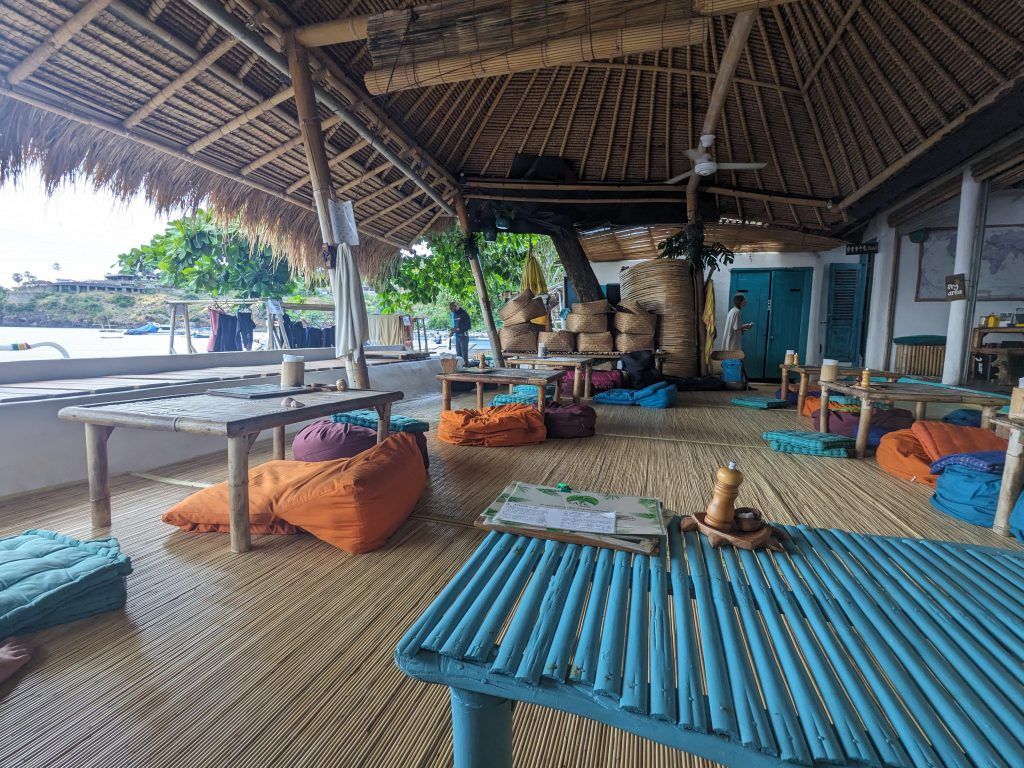While Bali has amazing culture and scenery above water, it also has some enchanting places to visit underwater. I dove in Nusa Lembongan, Tulamban (near where I stayed in Amed) and Pemuteran. I also took a really nice free diving class in Amed.
My extensive land excursions in Bali are documented in this sister post: https://theperennialpilgrim.com/a-tour-of-bali
Nusa Lembongan
Nusa Lembongan is a small island off the coast of Bali which acts as a base for diving at the nearby island of Nusa Penida. There are two main diving options here. One is to go south to see Manta Rays at Manta Point, and the other is to go north and see a whole selection of rich, colorful dive sites.
My first dive was at Manta Point. Watching large 10-15 foot wide (3-5 meter) manta rays glide by you is one of the most amazing experiences of being underwater.
While these are not as large as open water mantas, you can still see by the divers near this one, how large it is.
This was only the second time I’d seen an octupus while diving, and the first time during the day.
A small group of ribbontail rays hanging out together.
Our second dive that day was at Crystal Bay and we saw our second octupus of the day there.
For the second and third days I went north to a number of really nice dive sites, a couple with some really strong currents.
Seeing turtles is pretty common when you dive, but they never get old, especially when there are two together.
There was really rich sea life at most of these sites.
A large lobster hiding under the coral.
The coral at a site called SD was especially healthy.
And then there was the site called Mangrove. We finished our third dives here each day. Both days the current was incredibly strong. One group we were with got caught in it without being able to stop and had to end their dive after less than 15 minutes. Both days we were able to go for around 40 minutes by spending some time under coral outcroppings away from the current before we hit the cutoff point of these dives.
Below you can see us hanging onto a sea line and then letting go into the current.
Tulamben
USAT Liberty was a United States Army cargo ship torpedoed by a Japanese submarine in January 1942 and beached on Bali. In 1963 a volcanic eruption moved the ship off the beach, and the Liberty wreck is now a popular dive site. The wreck has pretty much been cut in half over time and it’s now more of a really nice coral reef than an actual wreck.
Right next to the wreck is a nice reef area called Drop Off. Here a baby clownfish swims over the coral.
Just up the coast a bit from the Liberty wreck is Bali’s newest wreck dive, the Boga Wreck, which was sunk in 2012 to form an artificial reef. It’s a 40 meter long Dutch cargo ship.
As we entered the cargo hold we could see the remains of a Volkswagon van and then a nice sized moray eel under the wreckage.
In the next hold there was a Buddha statue and then a lionfish waiting for us.
My friend James exploring the wreck.
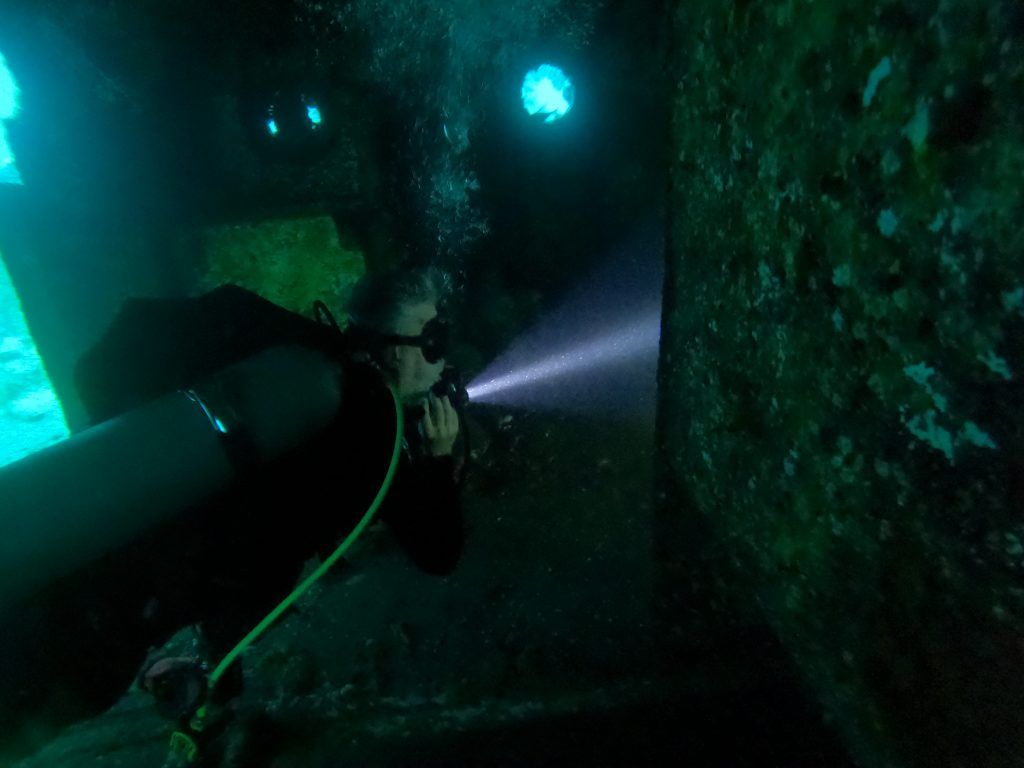
Not far from the Boga Wreck is a nice little area called Kubu Reef. Its claim to fame is that it has a scooter and numerous bicycles that were sunk to create the beginnings of an artificial reef.
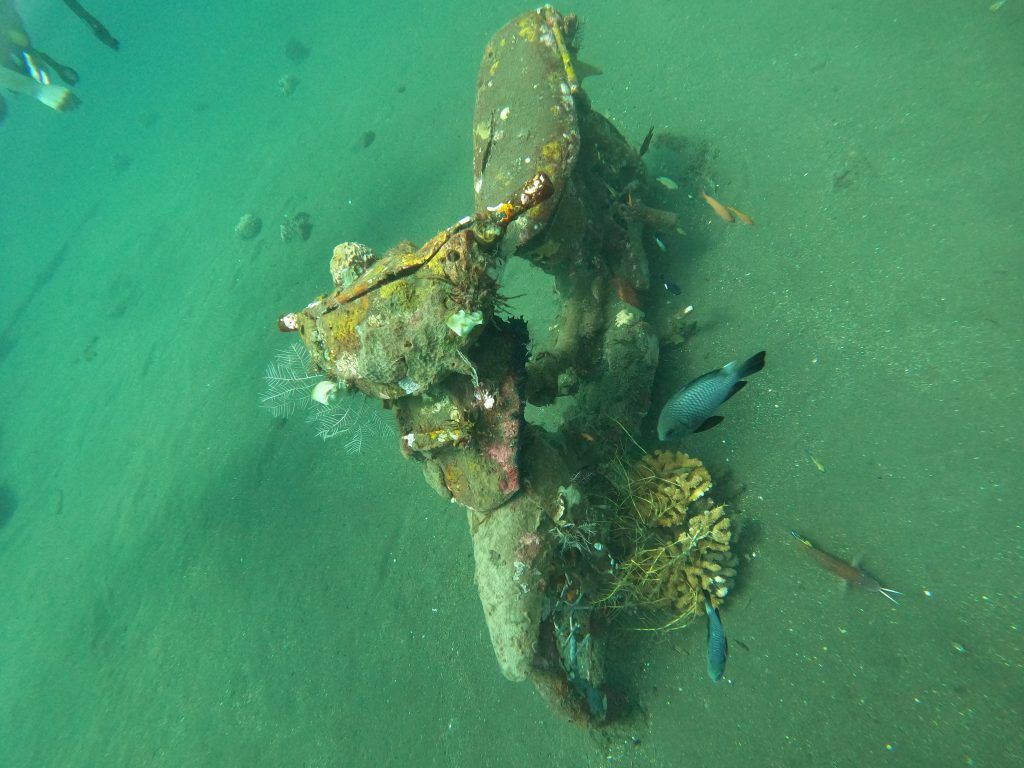
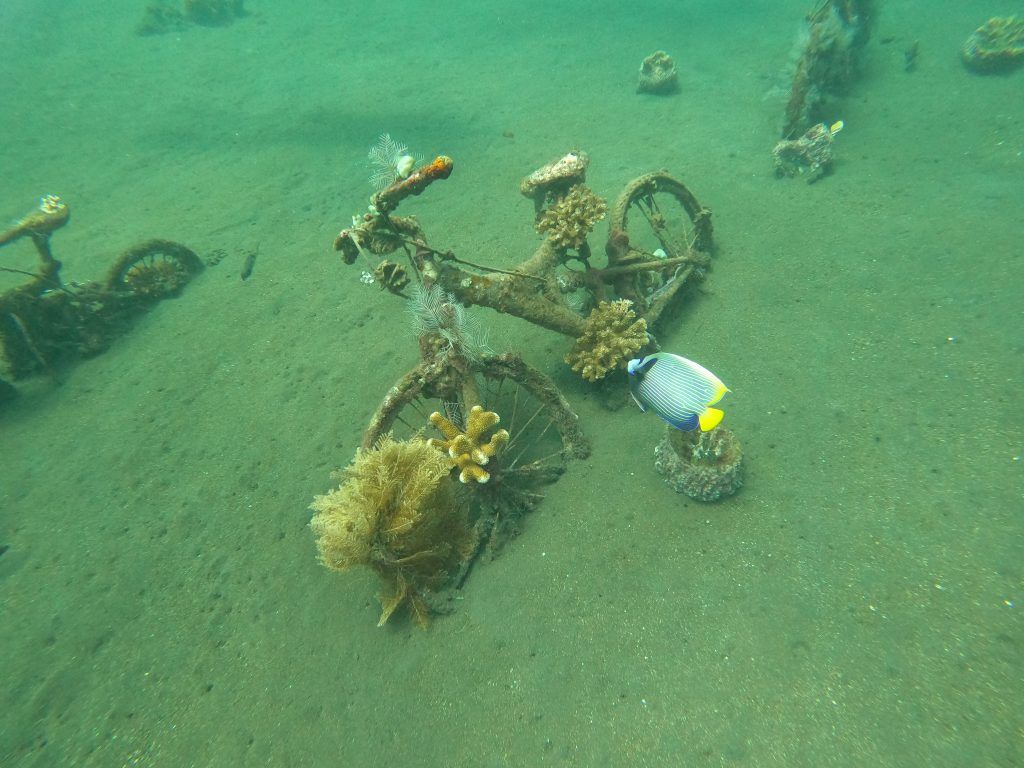
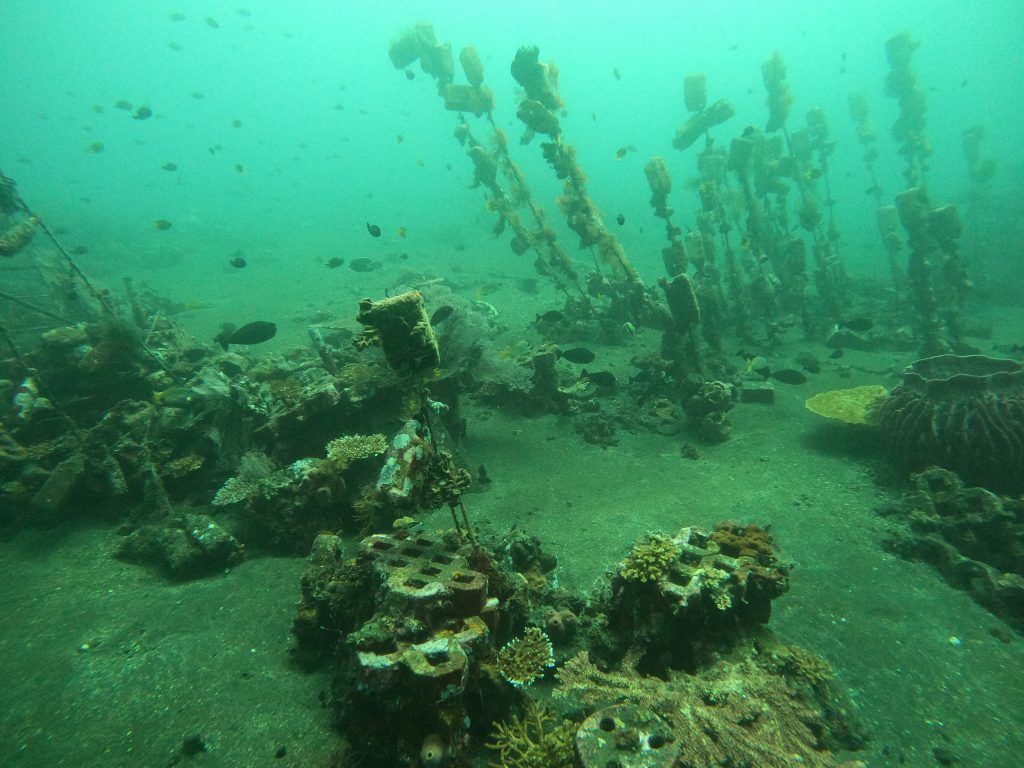
A really cool young ribbon eel slithered across our path.
I went back to Tulamben in May of 2024 and did some more diving in the area. Here I’m enjoying the view of a turtle swimming by.
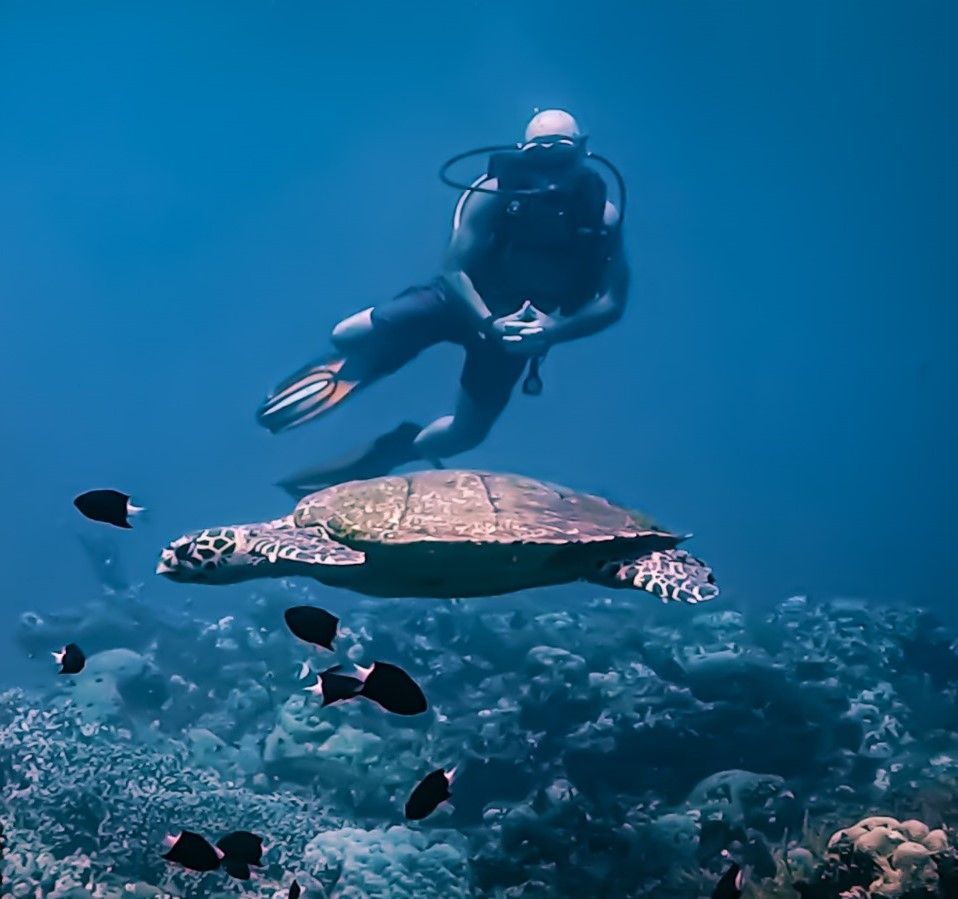
I had never heard of, or seen, an electric clam before this dive. The light here not actually an electric charge, but is coming from reflection of the ambient light (sun or diving light) from the brightly reflective edge of their mantle.
This may have been the first time I’ve seen a squid while diving, since they mostly come out at night.
A couple of dragon sea moths slowly circling on the bottom. They are supposedly monogomous for life.
A flounder moving across the bottom trying to find some food.
A really big pufferfish nibbling at some coral.
Pemuteran
Off the coast of Pemuteran is the island of Menjangan. It’s considered a world class dive site. Unfortunately, the day I was there it had rained hard the night before and the high visibility it is known for wasn’t as good as normal. It was still a wonderful dive with its rich, healthy coral.
Another beautiful sea turtle floating through the water.
Free Diving Class in Amed
Free diving is where you dive at depth with no tank; you are simply diving on one breath of air. I spent a full weekend in Amed learning how to formally free dive, and it was an incredibly educational experience. The most interesting part is that your ability to free dive at depth is less about how long you can hold your breath, but more about how well you can equalize your ears as you descend into the increasing water pressure.
I never had a problem equalizing when I was scuba diving, but I ran into all kinds of challenges doing this while free diving. The first challenge is that it’s much more difficult to equalize while you’re descending upside down. The second challenge is that as you go deeper your lungs contract with the pressure.
The lungs of an typical man hold about 6 liters of air. When you descend, this decreases. At 10 meters (33 feet) the lungs will only hold about 3 liters of air. The typical way of equalizing when scuba diving is to force air from your lungs into your head. This is called the valsalva technique. It’s not an issue when scuba diving because you are breathing air from a tank pressurized at sea level and your lungs therefore don’t contract. On the other hand, for free diving the initial technique that’s taught is the frenzel technique. Here you use the your tongue and your soft pallet to manipulate air in your mouth to push through the ears.
I was so used to the vasalva technique, I had a really hard time learning the frenzel technique. Hence, almost every time I hit about 7-8 meters, as my lung capacity significantly decreased, I had a hard time equalizing and the pressure on my ears forced me to abandon my dive.
To get your Level 1 certification you have to swim at least 30 meters in a pool on one breath (with fins), pass an exam, do a rescue at 6 meters, and reach a depth of at least 12 meters (39 feet).
Even with my equalization challenges I managed to get to 12 meters on one dive and 15.5 meters (about 51 feet) on another. But all my other dives ended by 8 meters, many much less. My two dive buddies both hit 20 meters multiple times. So I completed the course, had a lot fun, learned a lot, however still felt a bit unfulfilled. But that’s the way it can be when you learn something new 🙂
This is what it looks like when you successfully free dive to 12 meters.
And this is what it looks like when you have to stop and deal with equalization issues. Notice how I was trying to go back up and solve the problem, but my ears wouldn’t clear consistently. As you can tell, I still had fun!
Here’s the really chilled location of the Apneista Freediving and Yoga School, right on the beach with an easy access to the ocean. We did our pool work and some yoga sessions at a nearby facility with more room.
